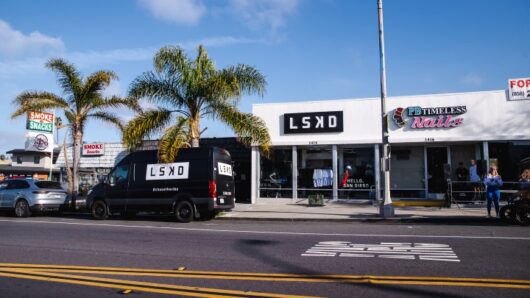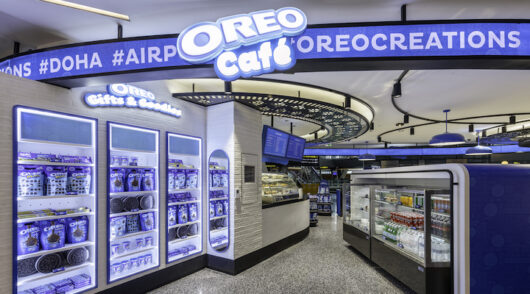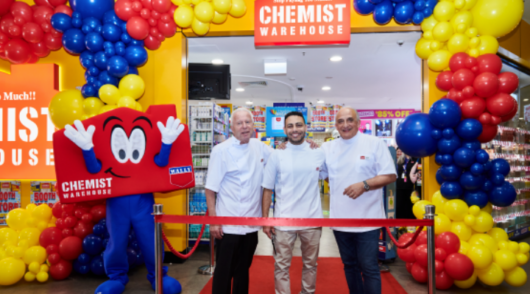While big does not necessarily always mean better, OPSM’s behemoth optometry store, Eye Hub, in Melbourne’s Hawthorn, proves this theory wrong…
At 1500sqm, OPSM Eye Hub is easily recognisable as you drive along Burwood Rd in Melbourne’s Hawthorn.
Standing among office buildings, car repair shops and dealerships, the state of the art two-storey glass building is unmissable on the tree-lined street.
More than two years in the making, OPSM Eye Hub is billed as the southern hemisphere, if not the world’s, largest optical store. Stocking 2000 SKUs with a further 3000 not on display, it is not hard to see why OPSM parent Luxottica is so proud of its newest incarnation.
Chris Beer, Luxottica CEO for Asia Pacific, anticipates a further two Eye Hub stores will be trading in Australia in the next 12 months in Brisbane and Sydney, with Asia next on the agenda for the concept.
Other areas under consideration are the UK and the US, however, the concept will be tailored to individual markets and branded according to its location.
“We’ll build three to understand the concept and from there we’ll devise a network plan to roll out a considerable number over the next period of time,” said Beer.
“Once we get some meat on the bones we’ll learn a lot and over time that might mean there will be more Eye Hub stores and a few less of our other stores. It is probably equivalent to 10 of our big OPSM stores, so it’s a big investment in terms of scale.”
He said Eye Hub was without doubt a category killer. “A lot of category killers in the past have been big warehouses and while this is big in everything from size, range, product, and technology, it’s also big on service, which makes it unique.”
The store is the product of the question, ‘what would our fiercest competitor look like?’ and from here, the idea grew from a seed to reality.
“We started wanting to do something unique and different, to raise the bar and change the game,” Beer said.
“We were already the market leader, and we looked at how we could make that even better and invest in the future.”
Hawthorn was chosen as the first location because of its proximity to the Melbourne CBD and public transport, as well as being a fashionable area of Melbourne.

“We didn’t want to be in the CBD, because we wanted to test the drawing power of the store as a destination,” said Beer.
The company hopes to be able to capture commuters on their way to and from work, as well as parents and children from the seven schools in the vicinity. There are no other Luxottica stores in the surrounding area, however, there are 40 competitor stores in a 5km radius.
“Typically, retailers tell the customer what’s going to happen when they walk in to a store. This concept relies on customers dictating their own shopping experience, and that includes telling a concierge at the door how they want to shop and what they want to spend their time on,” said Beer.
“The best thing about this store is that it will be a unique experience for each customer.”
The store has a staff of 25 to 30, including eight optometrists. Staff have been sourced internally from Luxottica stores in Victoria, South Australia and Tasmania to work in the store, and were selected based on talent and performance.

A journey through Eye Hub
OPSM Eye Hub customers are greeted by a concierge at the door, who is able to direct them to their destination.
The ‘vault’ sits squarely in the centre of the store, which is crafted in the shape of an eye. Based on the idea of a wine vault where high end wines may be kept, it houses exclusive, luxury and designer frames, including two diamond encrusted Bvlgari products valued at $18,500 each.
Rebecca Vulic, interior design director for e2, the company responsible for the store’s design, said the brief was that it had to be “all about the customer”.
“Because OPSM has such a large range of customers we had to cater to all of them, from the ‘in denial wearers’ to the fashion focused and the time poor,” Vulic said.
The colour palette of the store, which is based mainly on different shades of blue and ties in with OPSM’s branding, is designed to mirror a welcoming day spa and foster customer trust.
Rather than using typical optical imagery of frames or glasses, graphics throughout the store are based on what a customer might see through a pair of glasses.
Technology focus
When it comes to technology, it seems no expense was spared. The store includes interactive mirrors, which allow shoppers to record themselves wearing up to four different frames and play back at the same time to compare looks – incredibly helpful for visually impaired shoppers trying to pick frame styles. In the future, the screens will be linked to social networking sites to allow shopper to upload images or to send a video to a friend for a second opinion.
“The interactive technology with the mirror playbacks are very exciting,” said Vulic.
“But they had to be intuitive so that everyone from the young to the elderly would find it easy to navigate.
Two dedicated simulation rooms allow for the testing of product performance – the Oakley Air Simulation machine or Pressure Chamber is home to a stationary bike and treadmill and simulated with wind situations found in real life, while a glare simulation machine imported from the US (or Revo Elements Room) lets a wearer test the glare factor of glasses in different situations.

Eye health
Each of the 10 eye examination rooms boast hospital grade technology with the equipment used the same as that for eye tests of pilots and graphic designers.
“The optometry rooms needed to be a focus, so we decided to let it hug the product area so you could still understand that the rooms were there, but the customer experience was part of the journey as well,” said Vulic.
Consultation areas consist of two rooms – one for pre-testing and the other for examinations.
“There’s no waiting areas on the store floor, the strategy was that the waiting area becomes a private space, which ties back to the customer and trust,” she said.
Education pods are available to entertain customers waiting for lens prescriptions, which are made-up by the onsite optical dispensary. Parents and shoppers not wanting to be be bothered by children are also taken care of with the dedicated children’s area – a colourful soft play room also featuring educational interactions.
“Educating customers was a particular focus,” said Vulic. “We wanted to create a new generation of kids with eyecare awareness to change the future perception.”
The Eye Hub auditorium will also be a place of education for community and school groups, as well as optometrists from both the Luxottica group and competitor brands.
One month in, and the store has so far reached all its sales targets, with local area marketing only part way complete.
This feature first appeared in Inside Retailing Magazine. Click here to subscribe.





